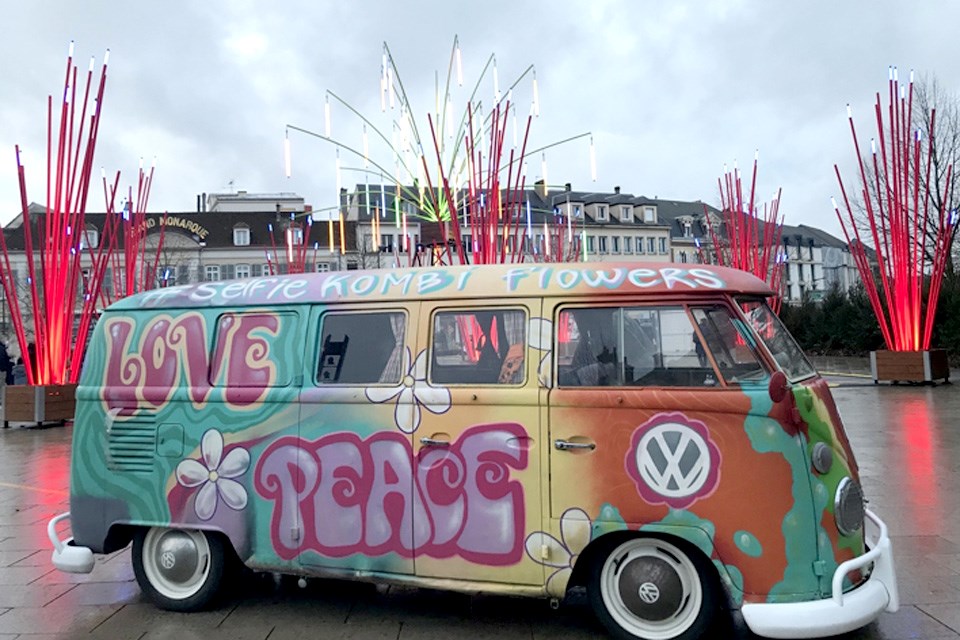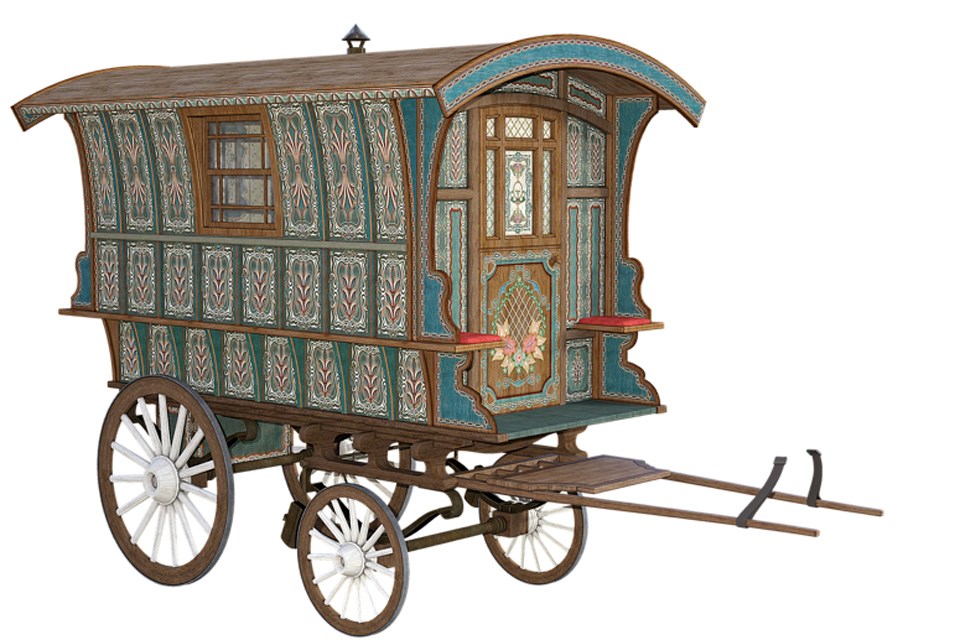The history of RVs takes us all the way from living in wagons to the future of electric campers.
The First Campers of Modern Times
1850s – Vardos, which is a Romani word for wagon, were used by the British Romanichal Travellers starting in the mid 1850s through to the 1920s. These ornately decorated wagons were horse-drawn and featured seating, beds, wardrobes, and even china cabinets. While many may know vardos as ‘gypsy wagons,’ the term gypsy is actually a pejorative term for the Romani people.
1904 – The first RV was hand-built onto a car. It included room for four adults to sleep, electrical lights, a radio, and an icebox.
1910s – Trailers for transporting camping equipment came onto the market. Auto Kamp started to manufacture the first pop-up campers that were designed to be towed by a Model T.
1915 – Roland Conklin’s Gas-Electric Motor Bus Company made a 25’ custom-built RV for the Conklin family. It included a generator, electric lighting, full kitchen, sleeping berths, folding tables, phonograph, convertible sofa, and a rooftop garden. It was considered to be a luxurious way to see the country and many credit the Conklins for the popularity of RVs today.
1920s – Pop-up tent trailers became a popular choice for travellers. They were generally fairly utilitarian and only included a bed and some storage.
1930 – The Covered Wagon Company started manufacturing solid body trailers, similar to what many people use today. By the end of the 1930s, the company was selling 20,000 trailers per year.
1931 – Airstream began manufacturing their iconic trailers at their first factory in Culver City, California.
Late 1940s – After WWII, the typical family summer holiday became more popular. Families started to enjoy the campgrounds that had been constructed as make-work projects during the Depression. Huge class A motorhomes could be spotted around North America each summer.
1950s and 1960s – Conversion vans like the Volkswagon Type 2, the Westfalia Vanagon, and Winnebagos became popular. These vans were popularized in many television shows and movies and became symbols for a fun-loving generation.

1970s – RVs were so popular that Mattel released the Malibu Barbie Country Camper in 1970 and the Barbie Star Traveler Motor Home in 1976.
Today – Today’s RVs include features that campers of the past would never have dreamed were possible. Many RVers enjoy solar panels, running water, heat and air conditioning, and WiFi. These days, more people than ever before are enjoying the RV lifestyle and it appears that this trend will continue.
Future – What’s in store for the RVs of the future? Only time will tell, but many companies are betting on electric vehicles to be the next big change in the industry. Even Volkswagen is re-imaging their iconic van of the 60s and 70s for the modern RVer. Their new electric camper van is set to start production in Europe this year.
The next time you head out on a road trip, think about the many generations before you who enjoyed the RV lifestyle. While the technology and amenities have definitely improved, the love of outdoor adventure has stayed with us all.
 This story was made possible by our Community Partners Program. Thank you RV City for helping to expand local news coverage in Alberta. Learn more.
This story was made possible by our Community Partners Program. Thank you RV City for helping to expand local news coverage in Alberta. Learn more.



